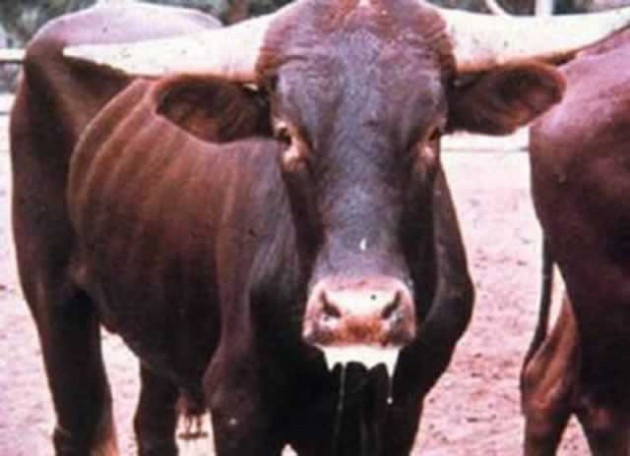Govt to step up efforts to curb foot-and-mouth

Martin Kadzere Senior Business Reporter
GOVERNMENT will step up efforts to contain the spread of foot-and-mouth disease in the country’s six provinces amid fears that the disease is threatening efforts to resume beef exports to the lucrative European Union, a senior Government official has said.
During the last season, the cattle herd was under pressure caused by the epidemic, which continued to spread as a result of increased mixing of cattle and wildlife.
The cattle also moved wider in search of water due to the dry spells experienced in the season.
As a result, six out of the 10 provinces were affected by the disease, leading to disruption of commercial activities involving cattle and other livestock products, Finance and Economic Development Minister Patrick Chinamasa said in the 2016 National Budget.
Foot-and-mouth is a highly contagious and often fatal disease that affects domestic livestock such as cattle, pigs, goats and sheep and can be transmitted from wild buffalo.
Zimbabwe, which had an annual export quota of 9 100 tonnes of beef to the EU lost the market following an outbreak of the foot and mouth disease about 15 years ago.
Since then, Zimbabwe is yet to be approved as being free from the disease.
Minister Chinamasa said capacitation of the national veterinary services and its disease prevention and control programme would be key in curbing further spread of the disease.
He said surveillance measures and strict movement controls would be put in place while awareness campaigns would be conducted to reduce the spread of the disease.
“The animal disease control measures are pertinent to our eventual ability to access beef export markets, particularly the EU and Middle East markets, which rests on the progress we make with regards to animal disease surveillance and control,” said the minister.
“In this regard, all A1 and A2 farmers will be called upon to invest in their farm boundary fences. This will be complemented by fencing off of all National Parks.”
Government will release $2,3 million in 2016 for procurement of vaccines to control the disease.
This year, 450 000 cattle were vaccinated while over 600 000 cattle were inspected.
Quarantine zones were also established to restrict spread of the outbreak into new areas.
Movement of cattle was also banned, as well as exhibition of livestock at the agriculture shows.
Meanwhile, Government is set to cut levies charged on livestock sales to boost competitiveness of the industry.
The move follow concerns raised by cattle farmers that the level of charges levied on sale of livestock sales were too high.
Submissions from stakeholders indicate that total levies average 10,5 percent of the sale price of a beast.
The levies are broken down as follows: 3,5 percent cattle levy to the council; 2,5 percent to owners of cattle sale pens (in most cases, the Local Authority); 3 percent to the Department of Livestock Production and Development for live cattle grading; and 1,5 percent to the auctioneer.
Minister Chinamasa said since communal farmers largely dependent on livestock for livelihood, the charges were on the high side.
“Levy collections become even higher in instances where they are applied to both the cattle seller and the buyer,” he said.
“In view of the above, with effect from January 1 2016, Government is reviewing these levies from the current 10,5 percent in consultation with cattle farmers and other stakeholders.”










Comments